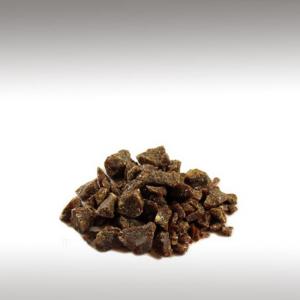
PERU BALSAM ESSENTIAL OIL (MYROXYLON BALSAMUM) - ESSENTIAL OILS

BASE / GENERAL DATA
Information submited: April 16, 2015 Modified: March 15, 2018 By: OperaDreamhouse
Botanical Name: Myroxylon balsamum
Common Method of Extraction: Steam distillation
Part Typically Used: Crude balsam
Color: Deep brown
Consistency: Very thick
Perfumery Note: Base
Peru balsam has a lot of names:
Balsamum peruvianim, Black Balsam, China oil, Honduras Balsam, Indian Balsam, Peruvian Balsam, Peru Balsam, Surinam Balsam, Balsams Peru, Balsam Peru oil, Oil balsam Peru, Peru Balsam oil, Balsamum Peruvianum, Bálsamo del Perú, Baume du Pérou, Baume Péruvien, Baume de San Salvador, Myroxylon pereirae Klotzsch resin, Myroxylon Balsamum var. pereirae, Myroxylon pereirae Klotzsch oil, Myrospermum Pereirae, Myrosperum Pereira Balsam, Balsam fir Oleoresin, balsam fir oil, Hyperabsolute Balsam, Quina, Balsamo, Tolu, Quina quina, Santos Mahogany, Toluifera Pereirae, and Toluifera Pereira Balsam.
Strength of Initial Aroma: Smell like a mixture of Clove, Cinnamon and Vanilla, sweet and spicy.
Balsam of Peru essential oil is distilled from Balsam of Peru, a resinous substance secreted from a tree in Central and South America.
Balsam of Peru, also known and marketed by many other names, is a balsam derived from a tree known as Myroxylon, which is grown in Central America (El Salvador) and South America. It is known by names like Black Balsam, Quina, Tolu, Balsam Fir oil, Balsam Fir oleoresin, Peru Balsam Oil, Indian Balsam, China oil and Balsamo. This essential oil have a unique aromatic combination of sweet and spicy.
The trees are large, growing to 40 metres tall, with evergreen pinnate leaves 15 centimetres long, with 5 - 13 leaflets. The flowers are white with yellow stamens, produced in racemes. The fruit is a pod 7 - 11 centimetres long, containing a single seed. The tree is often called Quina or Balsamo, Tolu in Colombia, Quina quina in Argentina, and sometimes Santos Mahogany or Cabreuva.
The tree contains an oil that is naturally resistant to decaying, and also resistant to preservative treatments. When introduced into tropical regions the tree can become highly invasive. The tree threatens ecology in Sri Lanka, several Pacific Islands, and Indonesia as it tends to grow in dense stands blocking out the ability for other vegetation to grow. This leads to local native plants disappearing and the animals and insects that feed on those plants starve as a result.
The wood is dark brown, with a deep red heartwood. Natural oils grant it excellent decay resistance. In fact, it is also resistant to preservative treatment.
Balsam of Peru is an aromatic viscous resin obtained by scorching or inflicting V - shaped wounds on the bark of the trunk of the tree Myroxylon Balsamum var. Pereirae. In response, the Balsam of Peru - oily, resin - like, aromatic fluid - exudes to heal the tree's lesions, and the liquid is collected.
The essential oil is obtained through steam distillation of the bark of the tree. Another way is essential oil is distilled from the balsam. The resin - free essential oil is obtained from the crude balsam by high vacuum dry distillation. The oil can also be co-distilled from the resin using solvents.
Another way of extracting:
Peru is harvested in successive phases. The bark is burned and these specific spots are covered with pieces of cloth that absorb the exudate. The cloth is then pressed and the balsam is purified by boiling. The trees suffer no permanent damage from this process, and can continue to yield balsam for more than 100 years. Biolandes has established a secure and sustainable supply at the source, importing purified balsam to France where it is processed to produce Peru absolute. Peru production amounts to about 80 tons per year.
In the early period of Spanish dominion in Central and South America the balsam was collected in Central America and shipped to Callao and Lima in Peru, then shipped onward to Europe. It acquired the name of Peru because it was shipped from there. Its export to Europe was first documented in the seventeenth century in the German Pharmacopedia. Today it is extracted under a handicraft process, and is mainly exported from El Salvador.
Chemical structure:
Balsam of Peru smells of Vanilla and Cinnamon because it contains - among its 25 or so different substances - cinnamein, cinnamic acid, cinnamyl cinnamate, benzyl benzoate, benzoic acid, and vanillin.
It also contains cinnamic acid alcohol and aldehyde, farnesol, and nerolidol. A minority of it, approximately 30 - 40%, contains resins or esters of unknown composition. It also contains essential oils similar to those in Citrus fruit peel. These are all potential allergens.
Common Method of Extraction: Steam distillation
Part Typically Used: Crude balsam
Color: Deep brown
Consistency: Very thick
Perfumery Note: Base
Peru balsam has a lot of names:
Balsamum peruvianim, Black Balsam, China oil, Honduras Balsam, Indian Balsam, Peruvian Balsam, Peru Balsam, Surinam Balsam, Balsams Peru, Balsam Peru oil, Oil balsam Peru, Peru Balsam oil, Balsamum Peruvianum, Bálsamo del Perú, Baume du Pérou, Baume Péruvien, Baume de San Salvador, Myroxylon pereirae Klotzsch resin, Myroxylon Balsamum var. pereirae, Myroxylon pereirae Klotzsch oil, Myrospermum Pereirae, Myrosperum Pereira Balsam, Balsam fir Oleoresin, balsam fir oil, Hyperabsolute Balsam, Quina, Balsamo, Tolu, Quina quina, Santos Mahogany, Toluifera Pereirae, and Toluifera Pereira Balsam.
Strength of Initial Aroma: Smell like a mixture of Clove, Cinnamon and Vanilla, sweet and spicy.
Balsam of Peru essential oil is distilled from Balsam of Peru, a resinous substance secreted from a tree in Central and South America.
Balsam of Peru, also known and marketed by many other names, is a balsam derived from a tree known as Myroxylon, which is grown in Central America (El Salvador) and South America. It is known by names like Black Balsam, Quina, Tolu, Balsam Fir oil, Balsam Fir oleoresin, Peru Balsam Oil, Indian Balsam, China oil and Balsamo. This essential oil have a unique aromatic combination of sweet and spicy.
The trees are large, growing to 40 metres tall, with evergreen pinnate leaves 15 centimetres long, with 5 - 13 leaflets. The flowers are white with yellow stamens, produced in racemes. The fruit is a pod 7 - 11 centimetres long, containing a single seed. The tree is often called Quina or Balsamo, Tolu in Colombia, Quina quina in Argentina, and sometimes Santos Mahogany or Cabreuva.
The tree contains an oil that is naturally resistant to decaying, and also resistant to preservative treatments. When introduced into tropical regions the tree can become highly invasive. The tree threatens ecology in Sri Lanka, several Pacific Islands, and Indonesia as it tends to grow in dense stands blocking out the ability for other vegetation to grow. This leads to local native plants disappearing and the animals and insects that feed on those plants starve as a result.
The wood is dark brown, with a deep red heartwood. Natural oils grant it excellent decay resistance. In fact, it is also resistant to preservative treatment.
Balsam of Peru is an aromatic viscous resin obtained by scorching or inflicting V - shaped wounds on the bark of the trunk of the tree Myroxylon Balsamum var. Pereirae. In response, the Balsam of Peru - oily, resin - like, aromatic fluid - exudes to heal the tree's lesions, and the liquid is collected.
The essential oil is obtained through steam distillation of the bark of the tree. Another way is essential oil is distilled from the balsam. The resin - free essential oil is obtained from the crude balsam by high vacuum dry distillation. The oil can also be co-distilled from the resin using solvents.
Another way of extracting:
Peru is harvested in successive phases. The bark is burned and these specific spots are covered with pieces of cloth that absorb the exudate. The cloth is then pressed and the balsam is purified by boiling. The trees suffer no permanent damage from this process, and can continue to yield balsam for more than 100 years. Biolandes has established a secure and sustainable supply at the source, importing purified balsam to France where it is processed to produce Peru absolute. Peru production amounts to about 80 tons per year.
In the early period of Spanish dominion in Central and South America the balsam was collected in Central America and shipped to Callao and Lima in Peru, then shipped onward to Europe. It acquired the name of Peru because it was shipped from there. Its export to Europe was first documented in the seventeenth century in the German Pharmacopedia. Today it is extracted under a handicraft process, and is mainly exported from El Salvador.
Chemical structure:
Balsam of Peru smells of Vanilla and Cinnamon because it contains - among its 25 or so different substances - cinnamein, cinnamic acid, cinnamyl cinnamate, benzyl benzoate, benzoic acid, and vanillin.
It also contains cinnamic acid alcohol and aldehyde, farnesol, and nerolidol. A minority of it, approximately 30 - 40%, contains resins or esters of unknown composition. It also contains essential oils similar to those in Citrus fruit peel. These are all potential allergens.

SPIRITUAL PRACTISES DATA

MEDICINE / HEALTH DATA

BEAUTY / COSMETICS DATA

FOOD / COOKING DATA
COMMENTS
No comments.


